Compare incandescent and LED bulbs - which are better?
A bit of history
To make you understand the difference between the appearance of both options, and accordingly the difference in what scientific and technological progress was, we will present the following facts comparing incandescent and LED lamps by the date of invention:
- The first light source (with tungsten filament) was patented in the 1890s by Russian engineer Alexander Nikolayevich Lodygin. At the same time, the first attempt can be considered an invention on July 11, 1874 - a filament lamp.
- As for the LED, the first, the glow of which was visible, was invented in 1962. The person who invented the LED lighting is Nick Holonyak, an American scientist.
As you can see, even if you compare the date of invention of alternative options, you can see a huge difference in almost a century. Nevertheless, the oldest light bulb is still “struggling for a place under the Sun”, which is its huge plus.
Power and light output
At installation of lighting in the apartment First of all, settlement work is done. One of the most important indicators of the calculation is the light output of the devices. In a more obsolete light bulb, light output ranges from 8-10 Lm / W. As for LEDs, their light output efficiency is usually in the range of 90-110 Lm / W, although there are models with an indicator of 120-140 Lm / W. From the above values, it can be seen that LEDs are 7-12 times better in lumens than the alternative.
In order for you to understand how this will affect the comparison of incandescent lamps and LED light sources in terms of power, we will provide the corresponding table:
It can be seen that the power of the diodes is 5 times less and the luminosity and brightness will be approximately the same.
If you decide to design home lighting, we recommend that you rely on the following table comparing incandescent and LED power indicators:
| Required Power (W) | ||
| Room size (sq.m.) | Incandescent | LED |
| <6 | 150 | 18 |
| 10 | 250 | 28 |
| 12 | 300 | 33 |
| 16 | 400 | 42 |
| 20 | 500 | 56 |
| 25 | 600 | 68 |
| 30 | 700 | 80 |
In order to independently calculate the light output of a bulb, you need its luminous flux (indicated on the packaging in “Lm” divided by the power “W”), as a result you will get the desired value. For example, if the luminous flux of the LED is 1000 lumens, and the power is 13 W, the return will be 76.9 Lm / W.
Heat dissipation
The second, no less important point of comparison of LED lamps and incandescent is the heat transfer from the product. A glass bulb of an incandescent lamp can heat up to 250 degrees (although usually the temperature is around 170).That is why such products are fire hazardous, and it is not recommended to use them when installing electrical wiring in a wooden house. In addition, Ilyich’s bulbs are difficult to unscrew from a cartridge if they have worked for a long time before that (you can get burned). LEDs in this regard have proven themselves better than all existing options. The maximum temperature of their heating does not exceed 50 degrees, which allows them to be used in any room.
Life time
But this indicator is one of the main advantages of diodes in comparison with incandescent lamps. These light sources can work over 50,000 hours, according to manufacturers. For obsolete light bulbs, the service life usually does not exceed 1000 hours, which is 50 times less. For reasons of economy, it is better to buy an expensive, but long-lasting light bulb once, than to change a budget product every few months.
Here, too, there is a nuance that you should know about. High LED longevity is not an accurate value. The fact is that the diodes fade over time (degrade), so after 40,000 hours you will no longer be able to enjoy the glow that was immediately after the purchase. Read more about LED degradation You can find out from our article.
Efficiency
The efficiency should also be considered when choosing products. Efficiency shows how much electricity is converted into light, and how much into thermal energy (which is why the bulb is heated). At led bulbs Efficiency is about 90%, which is a very high indicator compared to the alternative option, in which only 7-9% of electricity is transmitted to the light.
Environmental friendliness
Unfortunately, many do not pay due attention to preserving the ecology of the environment. People throw fluorescent lamps into garbage bins, despite the fact that mercury evaporates when the bulb is destroyed, which harms both nature and the health of those around it.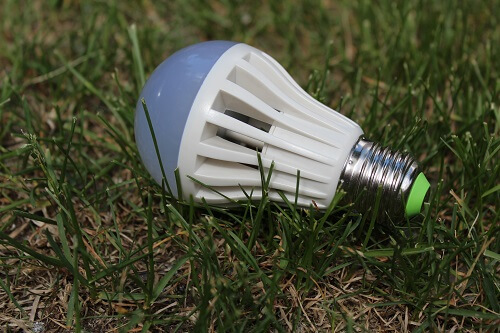
In this regard, the comparison of incandescent and LED lamps does not put forward any option in the lead. Both diodes and a glass bulb can simply be thrown into the trash, without special disposal.
There is an opinion that Ilyich’s bulb creates infrared and ultraviolet radiation, negatively affecting human health. In this regard, LED bulbs are completely safe.
Cost
And, of course, the most interesting question that users often ask is how profitable to buy LEDs, because they are much more expensive. Today on the forums on the Internet you can read a lot of reviews that refute or justify the saving of LED lamps. The lowest price of a high-quality diode bulb is 300, while at the same time the alternative has a cost of 20-25. Here you should already independently analyze what is more important for you - a long service life and high performance indicators, or low cost and excessive overpayment. Based on this, a comparison can be made on cost savings. The power of diodes is 7-8 times less, the price is 10 times more. Consider the service life and even without much calculation, you can understand that it is more profitable to buy LED lamps. You can clearly see a comparison of the efficiency of LED lamps and incandescent on the table below:
Other indicators
I would also like to compare incandescent and LED lamps based on tables on such signs as:
- current strength;
- fragility;
- Colour temperature;
All this comparison of incandescent and LED bulbs in total gives us a general idea of what is best to choose for a house and apartment!
Also read:

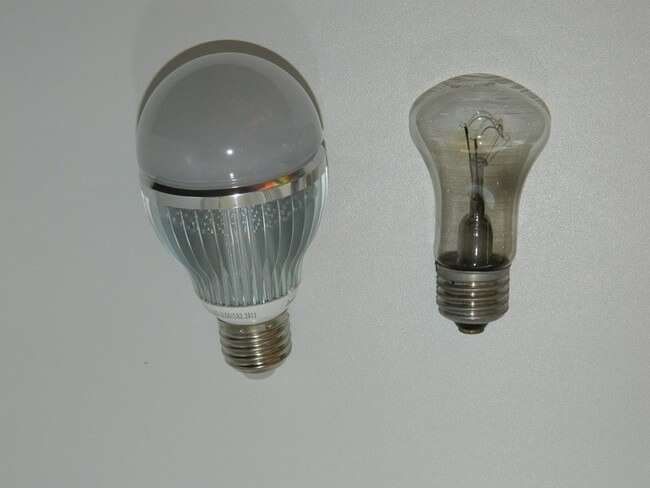
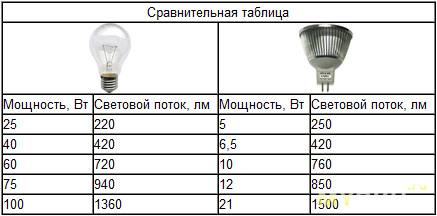
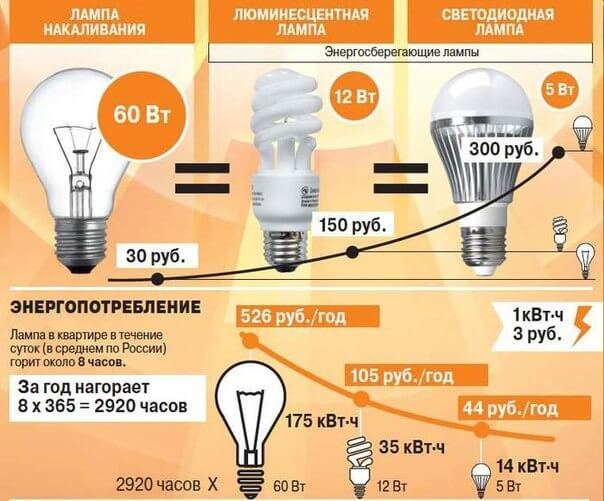
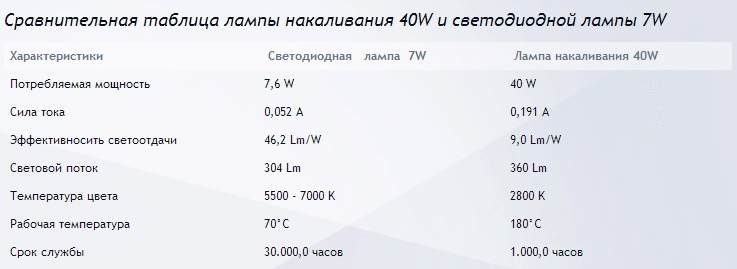
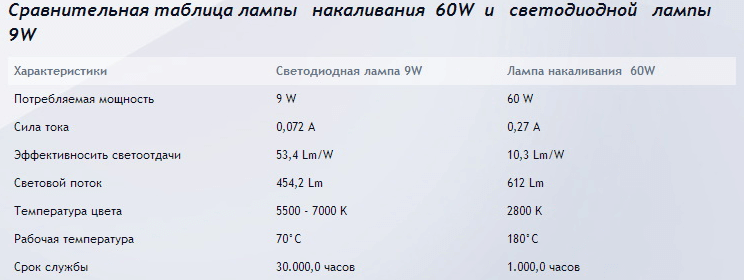
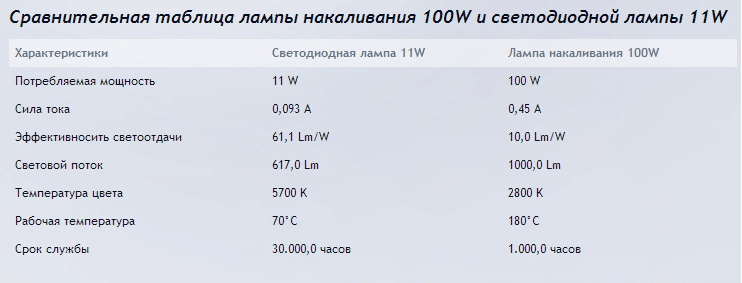
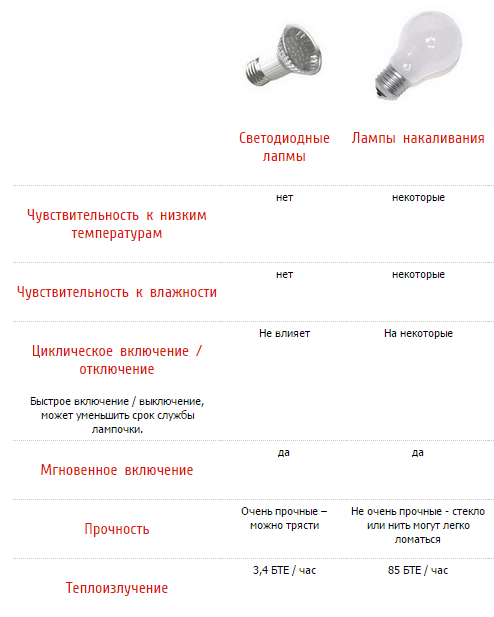



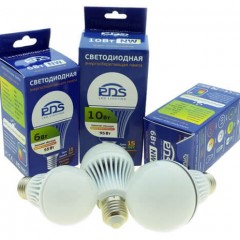
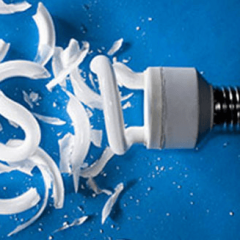
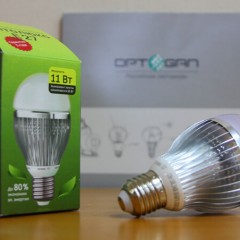

The data is outdated, LED lamps already have an average of 90-110 lm / W light output, which is 10 times higher than that of incandescent lamps. And the price is no longer 300, but 120-240.
As well as LEDs, in addition to the absence of ultraviolet and infrared radiation, they are “distinguished” by their delightful inconsistency with the spectrum of sunlight. And the eyes hurt, especially from specimens over 120-240 p., And these products of Chinese industry are burning no more often than incandescent lamps, and the given conformity plate frankly lies: a 150-watt incandescent lamp will illuminate a room of 6 square meters. m. much brighter than the 18-watt LED, while not requiring effort to select a more or less pleasant spectrum.
The only major advantage of LED lamps is efficiency.
As for the service life, you’re wrong. An incandescent light bulb burns out at least 10 times faster. I bought LED 5 years ago and not a single one burned yet, but an incandescent lamp burned after a month or two and change
Soft start solves many problems. My halogens with an osram transformer have been working for the 4th year in the bathroom and in the toilet, where the lights are turned on and off most often. And in the LED lamp, in addition to the LED itself, there is also an electrolytic capacitor, which work an order of magnitude smaller than LEDs ...
Since 1991, at bourgeois manufacturing plants, they intentionally underestimated the life of incandescent lamps. This is possible only in capitalist countries, where PROFIT is the main thing, and not environmental friendliness, quality, durability, reliability.
Yes, and the efficiency of the finished product is about 50%, not 90% - they themselves indicated that at 11 W the current consumption was 0.09, which is 22 W at a mains voltage of 230 V
An incandescent lamp of 100 watts takes a LED 16 watts and the lighting is equal
the efficiency obtained from LED is not 50% but 500% do not know how to count
And I do not like LED, it sucks. They even chose the warmest temperatures, I don’t know where it is much lower, or the manufacturers are cheating, 3000K is like in a morgue ((((This is, firstly, the first minus! The second minus: I had to choose lamps with 800Lm in general, i.e. all the rest are just jokes, to which they practically do not shine, twilight, worse than with any incandescent, even the weakest in power, is just disgusting. And the third thing that I still don’t like today is that these LED lamps do not evenly illuminate the room at all , as actually any lamp, if you turn on incandescent light - it shines one Since it’s both in the center and almost the same in all other corners, these wretched lamps are only in the center, then a sharp break in the light is felt already half as much as the glow, then another meter — already a third. Well, what is this alternative to normal bulbs?> :-( I do not consider all these new lamps a worthy alternative to ordinary old ones. New ones do not give any natural daylight - they are all GRAY, even the warmest type 2700K - it's like in a morgue! This is not daylight! And many manufacturers are also deceiving. Maybe they save electricity, but they are not worthy competitors for replacing incandescent lamps. Everyone says, advertise, save, new lamps ... so what ?! I tried, I didn’t like it right away. The first batch had to be handed over ALL ... those that have a cold temperature - it is only if your room itself is blue, blue and you enjoy this color, and even we refused, although it was suitable for the color of the finish. Even such a light in some toilet infuriated me, not like in the rooms. I find this terrible. No, I don't like it. I understand that they significantly save energy, but the lamps are disgusting. Everything is dull and gray, and another problem - it is impossible to look at them, it is very dazzling. For example, you lift your head to the ceiling, and there is such a hellish spotlight. Nightmare!(((
What else can I say ... personally, my opinion ... LED lamps are suitable only for small bulbs in large numbers over the entire ceiling, as do suspended or suspended ceilings and slots for such lamps - so that the light is at least uniform.But anyway, if I hadn’t tried it myself and blindly ordered it, spent the money, I would have been catastrophically upset, and would have been very, very angry ... I would still have to return to ordinary chandeliers and ordinary lamps.
It’s actually I don’t know what will happen to the LEDs a month, six months later, a year ... because if they illuminate worse, then they DO NOT WORTH IT AT ALL. Well, yes, they save energy, because power is not enough, but I'm sorry, if you use candles at all, then you don’t need electricity either))) 😀 No, I don’t like such a light. It’s not at all comfortable; in general, the eye is not pleasing. The thermal temperature is disgusting, there is no smooth transition in the lighting, it blinds your eyes or even accidentally looks (what will happen during the morning trainings - I can’t even imagine the complete Gestapo) - these are the main and very significant disadvantages. From the first batch of lamps, my family and I even got a head and eye pain, because the light was unusual, and because all in gray tones, some kind of intense light, everyone pulled out right away. It’s impossible to live like that. It is not known how it will be with the other party, perhaps there will also be a complete rejection of it. I would not be surprised that such a grayish color will also affect the psyche, well, on the mood. Imagine being constantly in such a terrible light ... and so in Russia 2/3 - dullness and cold outside the window, and also in the apartment as well. No, this is some kind of concentration camp. I’m better, even if I need to save on electricity, I’ll climb like a mole in the dark than contact these lamps: D. The best is daylight in general! There is no analogue! And as for me - a better incandescent light than a powerful LED.
I don’t know why they first praised these lamps ?! Although right now they somehow do not praise. If they were so good - people would have changed everything long ago. And this is an unworthy replacement in general, nonsense. The only plus is saving electricity. There are no more pluses. As long as you pick it up, you’ll lose your mind so that you can come up and light normally, at least more or less be a replacement.
Pay extra money five times more if you do not like
++++ I agree completely. color temperature is difficult to choose, the light spectrum is disgusting. in fact, there are worthy replacements, yes, dear ones, but there are. For example metal halide lamps. The light output is the same as that of LEDs, the price is yes, it’s very high, but the color rendering index is> 90. Yes, we need special lights. I combine myself, but nevertheless, everywhere there is a significant part of the illumination with halogen incandescent lamps. Let's say in the room around the perimeter 16 halogen lamps of 20-35 watts are installed, so that the overall spectrum is closer to incandescent lamps. The rest is fluorescent or LED, just to increase the brightness. But if you use purely LED, then this is tin, they are very unpleasant.
So I have the same feelings and emotions, so I think that you, Natusik, are 100% right. Tomorrow I will change the bulbs. In winter, turn on the light earlier, the light lasts longer and poured into your eyes like sand. And here you do not have to choose.
+++++++++ I totally agree with you. LED lamps also spoil the eyesight, they have a particularly strong effect on the eyesight of young children, it’s better not to save money, otherwise you’ll have to wear glasses for the rest of your life. And I agree with you about the light temperature of 2.700k, this is the warmest glow, I haven’t seen it below, I installed 2 LED lamps in the bathroom + toilet, because I do not consider it harmful to the eyes to RISK in such poor lighting. In the pantry, in the barn, in the closet, in the cellar I think you can install. I DO NOT recommend reading under LED lighting, this is a “double blow” in vision.